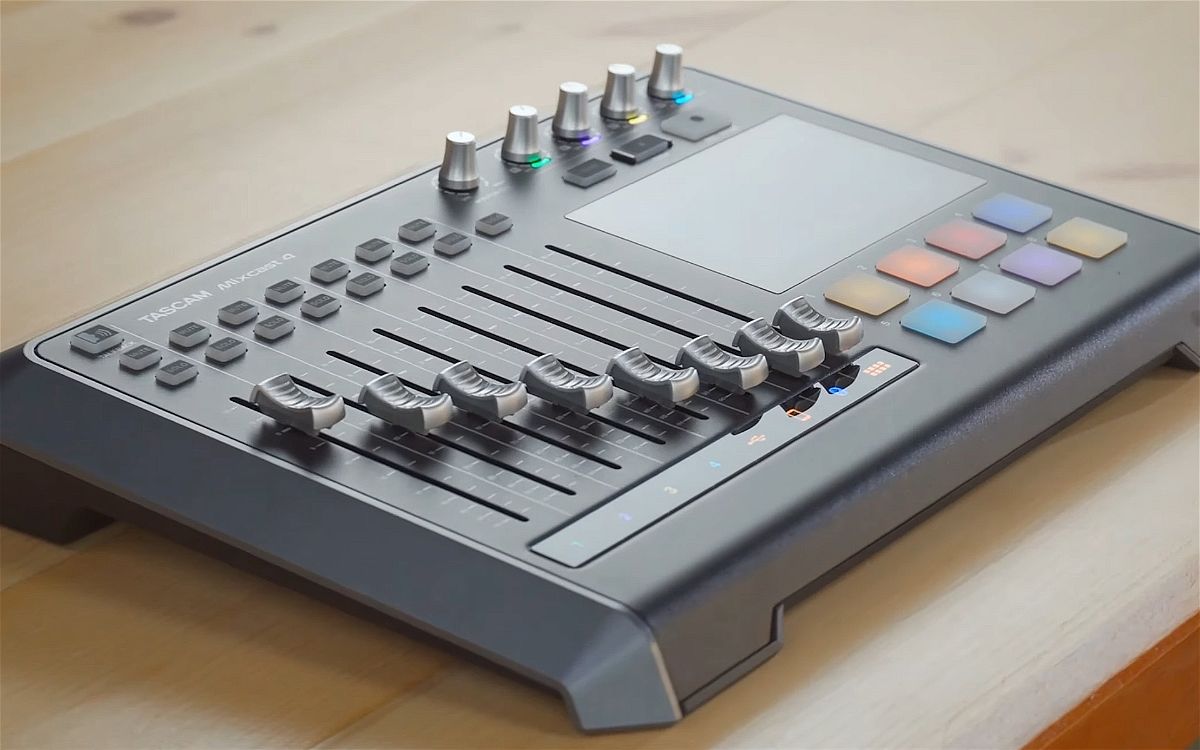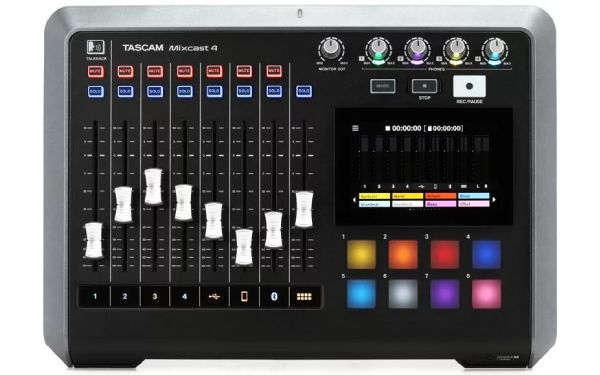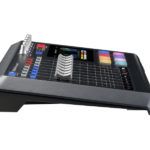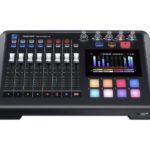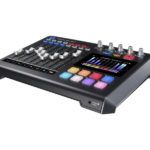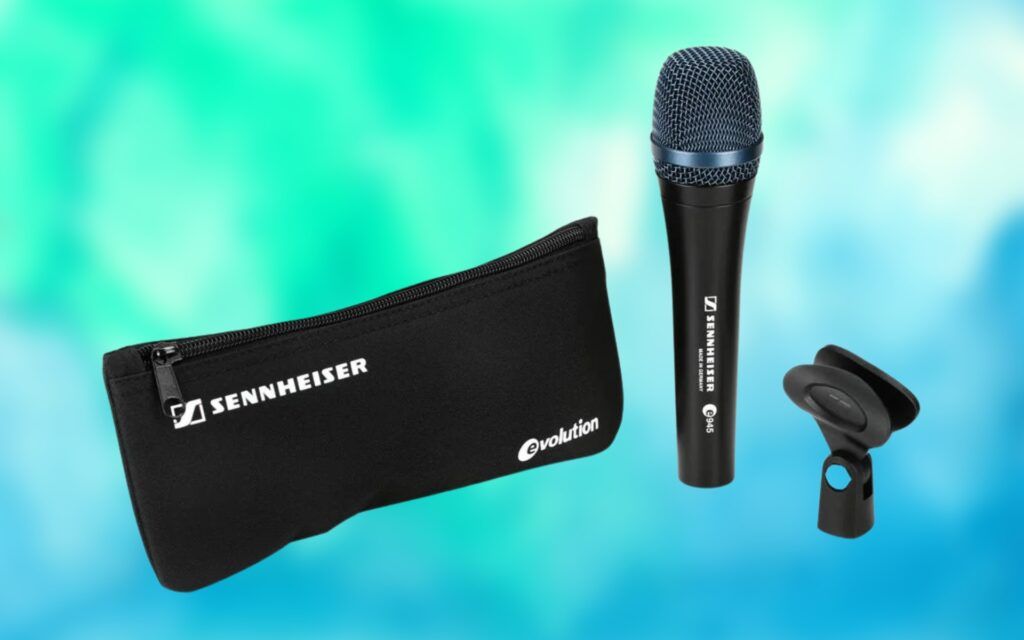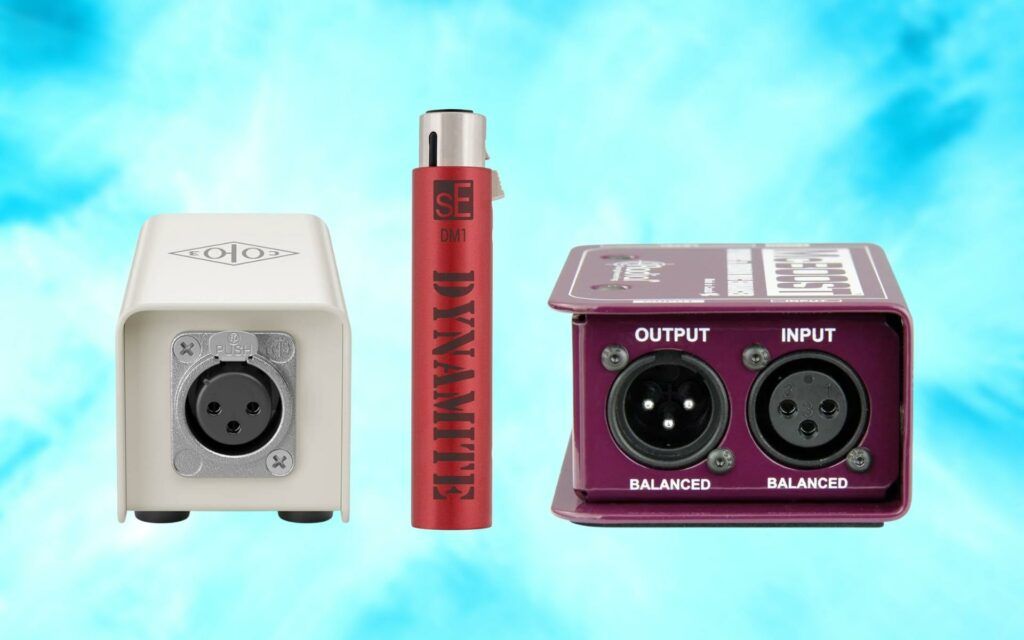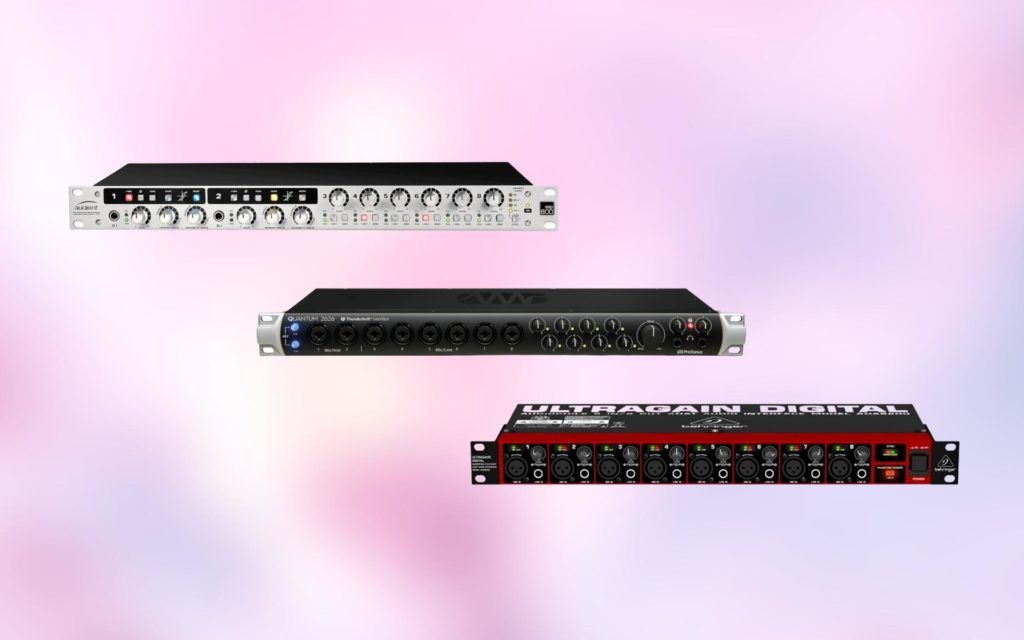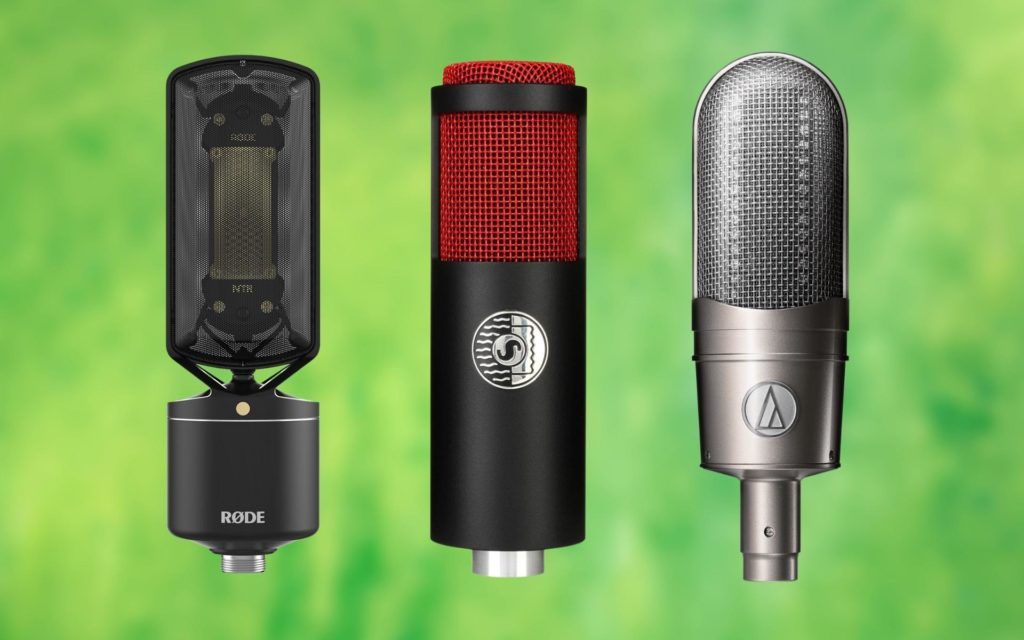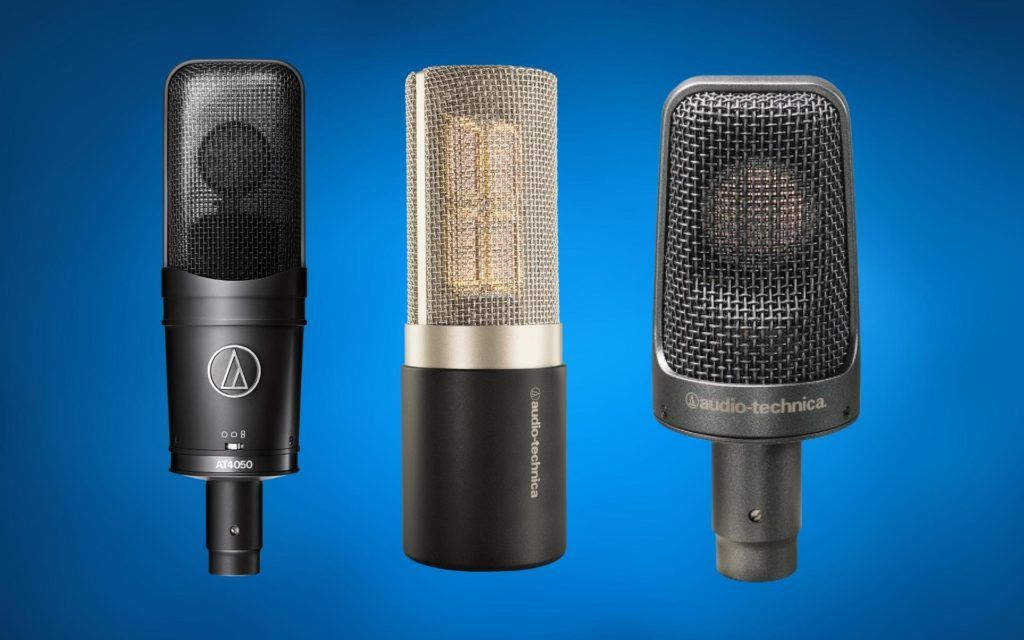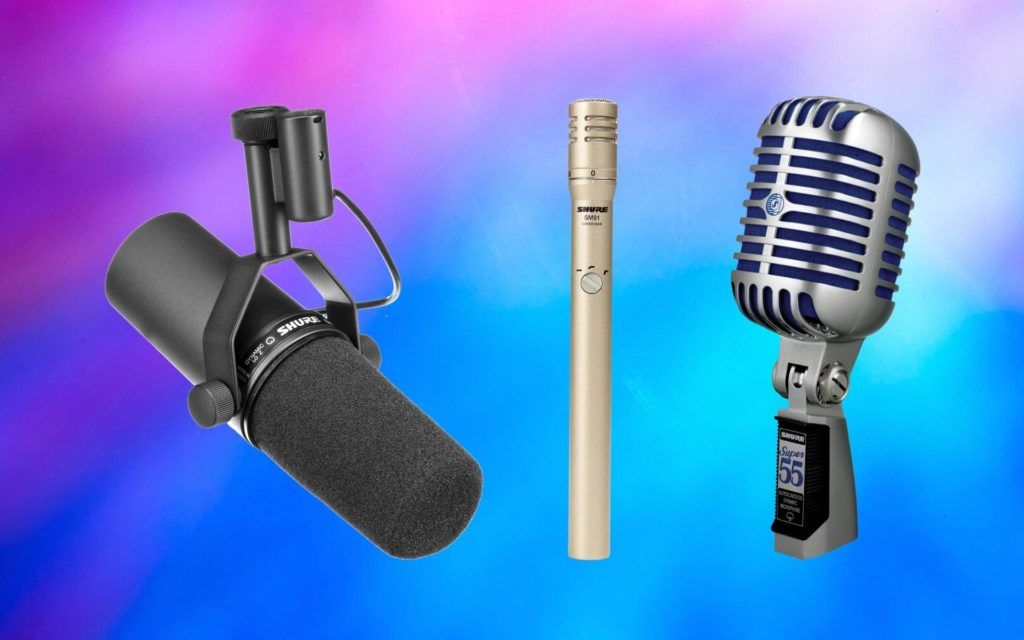We review products independently and our recommendations are genuine. If you purchase through links on our site, we may earn an affiliate commission. Learn More
The Tascam Mixcast 4 is an intuitively designed recording console aimed specifically at podcasters. This all-in-one workstation is considerably easier to use than other podcast devices I’ve tried, and it comes with a range of features to give you complete control over your podcast recordings.
Tascam Mixcast 4
Key Features
- Touch panel control
- 14-track direct recording
- Real-time audio effects
- 4 microphone inputs
- 4 headphone outputs
- 14 in/2 out audio interface
81/100
Tascam Mixcast 4 Gallery
Tascam Mixcast 4 Performance & Design
Within seconds of unboxing the Tascam Mixcast 4, you can tell that this is a professional-level recording device. Manufacturers have tried to capitalize on the popularity of podcasting by releasing specialist devices, but not many live up to the standard set by the Mixcast 4.
A highly respected audio brand, Tascam has ensured that the Mixcast 4 performs well in all of the departments required for podcasting. It captures voices with impressive quality and detail, largely thanks to the 24-bit/48kHz A/D resolution.
Many of the popular podcast recording devices have complicated designs, which isn’t necessarily a bad thing if you don’t mind a slower process. However, Tascam has kept the Mixcast 4 as simple as possible without compromising on its performance.
The inclusion of Tascam’s Podcast Editor software significantly improves the functionality of the Mixcast 4 and is a great tool for getting to grips with the various capabilities of the recording console.
To stave off any potential noise issues, the Mixcast 4 comes with a de-esser and noise suppressor. These tools are automatically switched on when you load up the console, and further, preserve the sound quality of podcast recordings.
The Mixcast 4 works perfectly with any variety of microphones, whether you prefer to record podcasts with condensers or dynamic mics.
Tascam Mixcast 4 Controls
One of the main aspects of the Tascam Mixcast 4 that sets it apart from most of its competitors is the wide variety of controls and parameters it houses. Despite the extensiveness of the control layout, Tascam has managed to avoid overcomplicating things.
The Mixcast 4 has a total of seven channels, each of which has its own mute and solo buttons, along with a fader for controlling the level. There’s also an eighth fader that controls the master level of all the input channels combined.
Located on the top right side of the console are five rotary controls, one of which adjusts the monitor level, and one that is used to tweak the headphone levels. Underneath these knobs are simple stop and record buttons.
The eight responsive sound pads can be used to trigger a range of podcasting effects that are built into the console, and because they’re colored individually, it’s easy to remember which effects are loaded into specific pads.
In addition to the efficient physical controls installed on the front panel of the Mixcast 4, there is also a touch-sensitive LCD screen. This significantly increases the number of parameters that can be adjusted and affords you greater control over the various aspects of the recording.
Tascam deserves a lot of credit for the way that they have designed the controls of the Mixcast 4. The layout strikes a perfect balance between detail and simplicity, providing you with enough options to work with while avoiding making the console too crowded.
If you’re likely to use the same microphones, headphones, and other equipment when recording your podcasts, you can simply leave the faders and rotary controls in the same position to save you time when setting up the device.
Tascam Mixcast 4 Connectivity
Connectivity is something that this Tascam podcasting recorder isn’t lacking. In total, the device can be used to record seven people simultaneously – four via microphones connected to the console, and three via Bluetooth, USA call-in, or on a phone call.
It’s not always possible to record a podcast with all of the participants in the same room, so having the option to record people remotely is very useful and could result in you creating a lot more content in the long run.
You may be skeptical about the quality of the recordings made using Bluetooth to make phone calls, but Tascam has focused on ensuring that this feature is up to scratch. The recordings won’t be as polished as those made with a condenser mic plugged directly into the console, but they still sound clear enough for podcasts.
There are four microphone inputs installed on the Mixcast 4. These inputs can receive either XLR cables or TRS cables depending on your preference. They’ll work perfectly with any dynamic or condenser microphone you want to use.
The Mixcast 4 also offers two options for outputting the audio in real-time as you record. Firstly, you can connect the console to a monitor using TRS cables, or the stereo line output which takes a 3.5mm jack connector.
To match the number of microphone inputs, Tascam has loaded the Mixcast 4 with four headphone outputs so that each person can adjust their mix to the perfect level and hear all of the other podcasters clearly while recording.
Finally, this podcast recording device also comes with USB connectivity, which can be used to connect it to a computer or laptop.
Tascam Mixcast 4 Build Quality
One of the first things I noticed about the Tascam Mixcast 4 was its solid build quality and robust design. It’s constructed solely from steel, which gives it a durable feel and a substantial weight.
The various buttons and controls installed on the Mixcast 4 are also solid and require a considerable amount of force to press, turn or adjust. This is a good sign, as it indicates that the controls won’t break due to being used extensively.
Each of the eight touchpads also feels strong and likely to last for a long time before wearing out. When the recording console is lifted and moved, there are no rattling sounds, which suggests that the inner components are well secured and protected.
The more you inspect this recording device, the more you notice the ways that Tascam has ensured its toughness and build quality. For example, the power connector is threaded, which makes it much less likely to break.
The slot for SD cards is protected by a cover, which will prevent it from being damaged over time, and the jack inputs for microphones and line-level sources are combined for additional convenience and solidity.
Even the LCD screen, which is touch-sensitive, feels like it would take a lot of force to damage. There’s no doubt that the Mixcast 4 is built to withstand the inevitable wear and tear of podcasting.
Tascam Mixcast 4 Features
As I’ve already mentioned, one of the biggest strengths of this podcast mixing board is its simplistic design and operation. However, the manufacturer has crammed in an impressive number of features that improve the performance of the device.
Rather than having to rely on your DAW to process and mix audio from podcasts, you can do pretty much everything that is required using to onboard features of the Mixcast 4.
There’s an innovative feature known as Auto-Mix, which is triggered using the touch-sensitive display screen. When this feature is activated, the console will automatically set the levels of each microphone channel and rectify any dynamic issues that arise during the recording of a podcast.
There’s a port that is compatible with any size of SD card, which allows you to quickly export the audio from your Mixcast 4. This can then be transferred onto your computer, where you can use the included Tascam for Podcast Editing software to edit it further.
The Mixcast 4 also has a range of effects built into it, including reverb, voice transformation, laugh tracks, and more. These can be programmed to the four sound pads and triggered in real-time during a recording.
Within the included editing software, you’ll find a variety of features that can be used to shape the tone, dynamics, and timing of the recordings. You can even record songs and external audio via the auxiliary input or by importing them into the software retrospectively.
Verdict
The Tascam Mixcast 4 was released to rival the most popular podcast recording devices on the market in terms of performance, quality, and cost – and it does so in each of these areas.
As someone familiar with Tascam’s devices, I’m not surprised by the quality of the Mixcast 4. In terms of its design, it has been built to last and feels like it could last for decades if it was looked after properly.
A unique quality that this device has is that it manages to feel both modern and vintage at the same time. The combination of touchpads, colored controls, and classic fader and knobs provides a retro and state-of-the-art blend.
Another thing that I like about this recording console is its simplicity. In an industry where many manufacturers overcrowd their devices with too many complicated controls and parameters, Tascam has produced the perfect balance with this offering.
The fact that you can use the device without needing a computer or laptop to hand is also very useful. It makes your whole setup more portable and means you only need to pack away the Mixcast 4 with a few mics and cables to record a high-quality podcast on the road.
Being able to record both in person and via Bluetooth or phone calls is also a very convenient capability that this console has. If one of your podcast guests can’t make it, you can still go ahead and create content by utilizing the three additional inputs.
With phantom power for each of the four mic input channels, a range of built-in effects, and automatic recording onto an SD card of your choice, there’s nothing that this Tascam podcast station can’t do.
Tascam Mixcast 4 At A Glance
Pros
- Makes it possible to record up to seven people on a podcast
- The touch panel display is easy to navigate
- Bluetooth connectivity for capturing phone calls
- Achieves low-noise recordings
Cons
- Records four people in person and three via phone or Bluetooth
- Doesn’t come with an SD card

